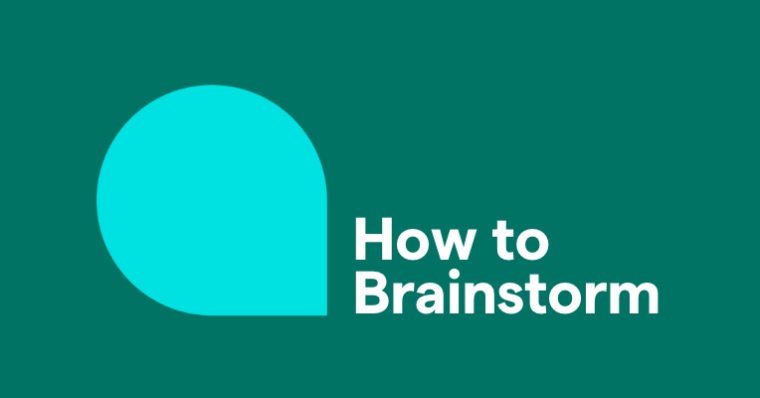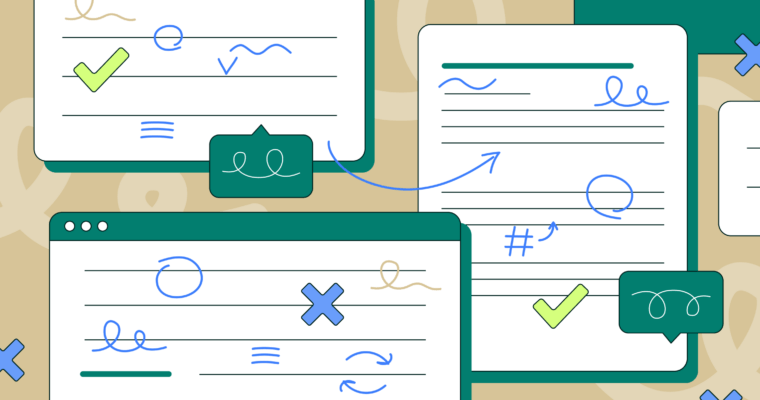
An outline is an organizational tool you use to keep track of all the topics and points you plan to include in a piece of writing. Knowing how to make an outline is a great advantage when you’re doing any kind of writing, from research papers to creative writing.
Still, many students and writers don’t know how to do an outline or understand the proper outline format. So below, we explain how to write an outline, with a step-by-step guide and a formal outline example. But first, let’s start with a simple question: What does it mean to “make an outline”?
Table of contents
What is an outline in writing?
Outline structure: What is the outline format?
Outline format example: What does an outline look like?
How to write an outline in 5 steps
What is an outline in writing?
An outline is like a blueprint for writing. Simple outlines list the topics you plan to cover and the order they will go in. Outlines are usually broken up by paragraphs along with their supporting details like statistical data or logical evidence. When it’s time to write the first draft, the writer simply follows the outline so they know what to write about and in what order.
Why create an outline?
Topic outlines let you focus exclusively on the structure and fitting everything in the right place. That way, when you’re writing the first draft, you can focus on details like sentence structure and clarity without getting distracted by the big picture.
Knowing how to write an outline for a paper is particularly important if you want to keep track of your prior research. When outlining, you can decide the best way to put your findings into sections and paragraphs. The outline not only organizes your research but also ensures you don’t forget anything when writing the first draft.
Outline structure: What is the outline format?
Easy outlines are structured by paragraph: You list the topic of each paragraph along with a few bullet points about what goes into that paragraph. This allows you to easily rearrange the order of the paragraphs to find the perfect arrangement before you begin writing.
The standard outline format uses an alphanumeric system, which alternates letters and numerals at the start of each section.
- Main topics like sections or chapters are listed as Roman numerals.
- Paragraphs are usually listed as capital letters.
- Points and subtopics within a paragraph are listed as Arabic numerals.
- Specific details are listed as lower-case letters.
The content of the outline is generally written in blurbs—you don’t need to use complete sentences, although if you’re working as a team, using full sentences can help other people understand your ideas better and vice versa.
Standard outline format has a distinct indentation. Roman numeral lines are not indented, capital letter lines are indented once, Arabic numeral lines are indented twice, and lower-case letter lines are indented three times.
So you can see what an outline should look like, here’s an example of a writing outline for this section of this article.
III. Outline structure
A. Overview about outline structure
1. explain basic structure of outline
2. reiterate how outlines help with paragraph order
B. Alphanumeric system
1. introduce the alphanumeric system
a. bullet list of each line in alphanumeric system
C. Content written in blurbs
1. exceptions for sharing with teams
D. Outline indentation
E. Outline example
1. example outline of this section
As you can see, you use only the lines you need—not every paragraph needs markers for subtopics, and not every subtopic needs specific details.
It’s also worth noting that there is no official structure for outlining. For example, if you’re using longer paragraphs, you might want to use Roman numerals as the paragraph marker. The above example is simply the most common and easiest format to follow, but you’re free to structure your outline however seems most reasonable to you.
Outline format example: What does an outline look like?
Knowing how to create an outline for an essay or another piece of writing is impossible if you don’t know what an outline looks like.
We’ve already written articles about essay outlines and argumentative essay outlines in particular, but that doesn’t cover everything. So below we’ve included an outline example of a five-paragraph essay comparing the pros and cons of social media.
I. Does the harm of social media outweigh the benefits?
A. Introduction
1. briefly mention background of social media
a. specific examples like Instagram, TikTok, and YouTube
2. explain how social media is a major part of modern people’s lives
3. end with a teaser about whether or not social media is actually good
B. The advantages of social media
1. increased socialization
a. “Many respondents in this study used their social networks to make friends, chat with them, conduct research, and share news or information.” (Awareness and Usage of Social Media study)
2. raise awareness of social issues
a. list causes that benefited from social media (Maryville article)
3. entertainment value
C. The disadvantages of social media
1. negative effect on self-esteem
a. Facebook knowingly harming teenage girls (Guardian article)
2. echo chamber effect
a.“Social media may limit the exposure to diverse perspectives and favor the formation of groups of like-minded users framing and reinforcing a shared narrative, that is, echo chambers.” (The echo chamber effect on social media study)
D. It’s how you use it
1. research shows both good and bad effects
a. “. . . some research finds that SNS use and self-esteem are negatively associated, while some find that they are positively associated.” (Social networking site use and self-esteem study)
2. ways to mitigate disadvantages
a. limit time on social media per day
b. choose only positive platforms
c. learn to recognize and avoid triggers
E. Conclusion
1. draw parallels to TV
a. TV can also be positive or negative depending on usage
2. reiterate healthy methods for social media use
How to write an outline in 5 steps
Want to know how to create an outline for an essay, academic paper, or even a piece of creative writing? Here’s how to make an outline in five simple, easy-to-follow steps.
1 Research and gather sources
The first step in any writing process is preparation. For academic writing, that involves researching and collecting evidence to back up your thesis. For creative writing, that means brainstorming and coming up with ideas.
Once you know what you want to write about, you can start to plan your outline. You can always add new content later if inspiration strikes you, but generally the more content you prepare at the beginning, the smoother the rest of the writing process will go.
2 Make a list of the topics you want to cover
When you know what you want to write, whether it’s a researched argument or creative content, the next step is to organize it. The most common and effective way to organize topics is by paragraph.
Take all your research or creative ideas and group them into separate topics. Remember that each paragraph should deal with only one main topic, so be sure to group everything with their related themes. Don’t forget to connect details like statistical data to their most relevant paragraph topic.
3 Consider the best order to discuss the topics
By now you should have a scattered list of topics, ideally divided by paragraph. Your next step is to decide the optimal order the paragraphs should go in.
Consider whether a topic requires some background information or if the reader will understand it right away. Some topics should be discussed early to prepare the reader for more advanced topics later on. If you’re having trouble deciding, chronological order also works fine.
Make the backbone of your outline by putting the topics in the order you think will work best. Think of this as the first draft of your outline—you’ll be able to move things around later if you don’t like how it’s organized.
4 Fill in the details
When you’re satisfied with the structure of your paragraphs, you can start filling in supporting details like quotes and references to sources. As you may have noticed from the standard outline format example above, it’s helpful to include direct quotes and source material links directly in the outline. This makes it easier to find the source material when you’re writing the first draft—and gives you one less thing to worry about.
5 Revise
After you create a working outline, you can review it for areas to improve. Sometimes, when you see your topics listed out, you recognize problematic areas. Maybe you don’t have enough evidence for certain points, or maybe your writing would flow better if the paragraph order was rearranged.
It can be helpful to have someone else review the outline to notice things you haven’t, although that’s not always necessary. Sleeping on it, or taking a fresh look at your outline after a rest, can also help you notice problems you missed before.
Outline FAQs
What is an outline?
An outline is a supportive document for organizing all the topics in a piece of writing before the first draft. Think of an outline as a blueprint; a writer can simply follow the outline as they write so they don’t forget to include anything.
When should you use an outline?
Outlines are useful for all forms of writing, from academic papers to creative writing. They help compartmentalize the stages of the writing process: When writing the outline, you can focus exclusively on the structure and big picture; when writing the first draft, you can focus on writing details without being distracted by organizational concerns.
What are the parts of an outline?
Typically, outlines are broken up into sections and paragraphs, with the relevant points or evidence listed under their respective topics. This makes it easy for writers to rearrange the paragraph order if they decide to change the structure.





